On-site Guide for Livestock Operators
An operator’s guide to self-assessing their operation and its relative risk for impacting surface and ground water.
Last Updated: 01/13by Greg Evertz
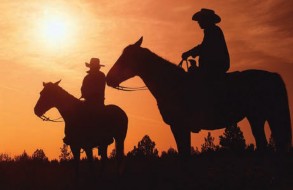
Why the concern?
Montana livestock producers are a vital and integral part of the heritage and lifestyle of this state. Keeping your water clean is important to your operation’s success. We all know the benefits to having clean water, not just for our livestock but also for our rural and urban populations. Pasture livestock, on most well managed grass ecosystems pose little threat to water quality; however, animal wastes in excess can degrade water to an undesirable level. Excessive hoof traffic and vegetation browsing in and around streams can increase soil erosion and damage fish and wildlife habitat.
What is the issue?
Concentrating animals in certain locations can be a large contributor to water quality degradation. We are talking about animal waste and livestock-related soil erosion and how these things can negatively affect our water. Here are a few examples.
- Animal health can deteriorate from facilities in bad locations and from management decisions.
- Bacterial and viral concentrations in livestock wastes may increase the spread of disease in your livestock.
- Organic material such as manure, bedding or feed, decreases dissolved oxygen concentrations in the water. This adversely affects fish and other aquatic organisms.
- Nitrogen compounds in urine and other wastes kill aquatic organisms by toxicity and present a health hazard to human drinking waters, especially for young children.
- High nutrient levels (nitrogen and phosphorus) in surface waters can create an “algae bloom” or the rapid growth of algae. As these plants grow and die, bacteria start to use up oxygen vital for aquatic life. Water temperatures may rise, algae toxins may build up and poison livestock, and the water will begin to develop undesirable smell and taste.
- Animal waste discharged into canals or irrigation ditches promotes algae and moss growth, which clog and retard flow, requiring costly, time-consuming herbicide treatments and manual cleaning to restore function.
- High animal concentrations on creek banks often cause physical damage, excessive vegetation removal, and erosion that add sediment to stream flows.
Today we have more choices than the pioneers who built their farmsteads near creeks or rivers as their only supply for water and shelter.

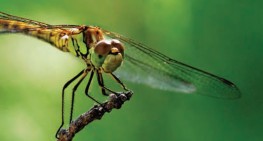
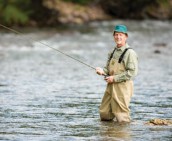

Water Quality Self-Assessment: What Can We Do?
You can use this guide to assess your own operation and the risk it presents to degrading water quality. Keeping your surface and groundwater clean protects your health,the safety of your livestock, the beauty around us, and the way of life for all Montanans.
Risk Factors Concerning Animal Wastes
| Risk Factors | Risk Levels | Suggested Best Management Practices (BMP’s) to offset risk | ||
| High | Low | |||
| Is your livestock facility covered with annual weeds or bare ground? |
Yes | No | Control run- on and run-off water, or consider limiting time in confinement to reduce manure buildup and to encourage perennial plant cover. |
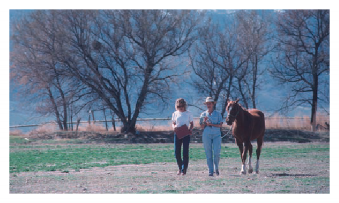 |
| Is the confinement area located in a flood plain where it frequently floods? |
Yes | No | Locate out of floodplain. |
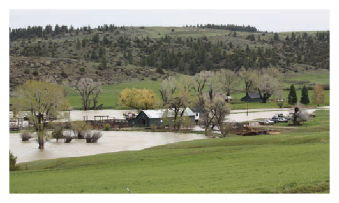 |
| How close is the facility to wells or surface water, i.e.,ponds, canal, streams, and wetlands. |
<100 ft. | >100 ft. | Divert water away, contain in pond or filter with vegetative buffer or relocate the facility to a better location. |
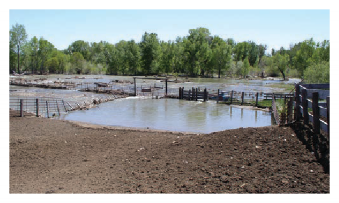 |
| Is ground water under the facility less than 4 feet below surface or is the facility on very porous soils? |
Yes | No | Consider water management to control ground water. Incorporate irrigation practices, drainage or relocate areas of confinement. |
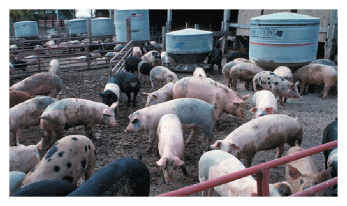 |
| Do confined animals have free access to open water? |
Yes | No | Establish alternate water sources such as waterers off of a pipeline or water system. |
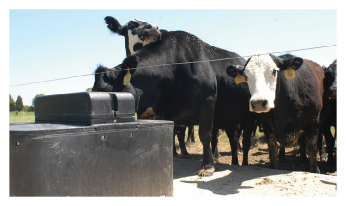 |
| Is the manure storage area left in the lot or stacked ona slope draining toward the water course? |
Yes | No | Scrape and pile or apply to land on a site away from water coursesor gravelly soils according to plant needs. |
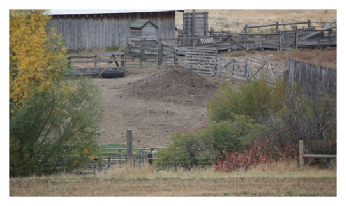 |
| Does upslope clean water drain through corral or doesthe land slope toward surface water? |
Yes | No | Divert clean water away from corral. |
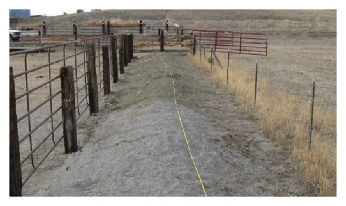 |
| Are wintering shelters placed near streams or creek bottoms? |
Yes | No | Build fabricated shelters, if necessary away from stream corridors or wetlands. |
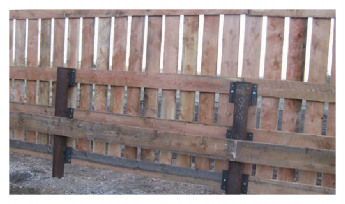 |
| Do you have heavy manure concentration on feed groundsor calving areas that may flow or migrate to stream channels? |
Yes | No | Rotate feed areas often or spread manure, if thawed, before run off begins. |
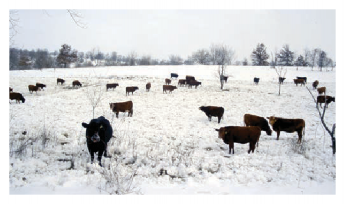 |
| Is your corral or feeding facility closer than 35 ft of a water courseor is your well within 100 ft? |
Yes | No | Is there a vegetated buffer strip between your facility and a water course? |
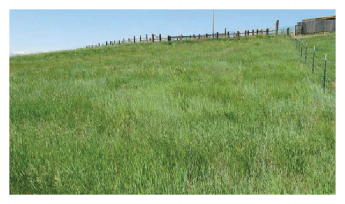 |

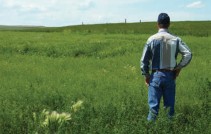
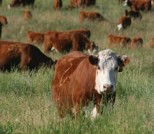
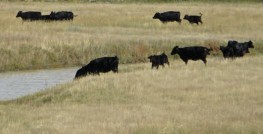
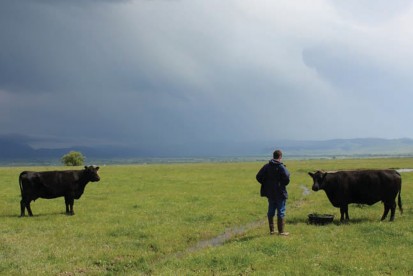
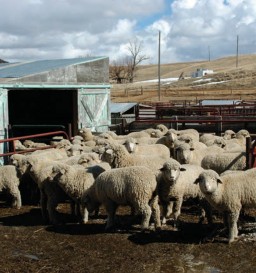
Stewardship: Where Do We Go From Here?
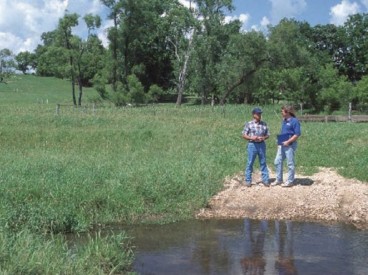
Awareness and desire to improve our operation are what make us good stewards of the land and water. Sometimes, changes that we can make are not that complicated and require very little costs. These are typically management factors, like choosing a good site before you build a confinement system, or feeding confined animals away from streams and wet areas. Other changes may require a substantial investment of time or money, like relocating pens, or installing off-stream waterers. Cost-share and grant programs are available to livestock producers to help us make these changes, and keep our farms, ranches, waters and wildlife sustainable for us and future generations. Many state, federal, and private sources have people who can visit with you one-on-one, confidentially, and help you design, fund and implement better management practices.Some typical practices that can be funded are:
- Relocation or redesign of confinement fences
- Drinking water development associated with relocated or redesigned confinement areas
- Water gap development associated with water quality improvements
- Diversion of overland flows above confinement areas
- Plantings associated with vegetative buffers below confinement areas
- Rain gutters and management of rain/snow waters from confinement roofs
- Wind break developments associated with relocated confinement areas
- Stream crossings
- Feedlot runoff ponds and land application systems
A list of commonly used sources of technical and/or financial assistance is included in the next section.
Background Information: Reference Material
We recommend contacting one or more of the following groups or individuals in order to obtain technical and/or financial assistance (this is not intended to be an exhaustive list, but a list of some of the more frequently used resources in Montana):
- Montana Association of Conservation Districts (Jeff Tiberi – 406-443-5711, jtiberi@macdnet.org, www.macdnet.org)
- USDA’s Natural Resources Conservation Service (local office info at www.mt.nrcs.usda.gov)
- Montana State University Extension Service’s Livestock Environment Program (Tommy Bass– 406-994-5733, tmbass@montana.edu, www.afostewardship.org)
- Montana Department of Environmental Quality’s 319 Grant Program (Robert Ray – 406-444-5319, rray@mt.gov, http://deq.mt.gov/wqinfo/nonpoint/NonpointSourceProgram.mcpx)
- A private engineering or consulting firm with experience and expertise in livestock waste management systems, grazing management, or river restoration.
- Your local watershed group (contact information is available from the Montana Watershed Coordination Council at www.mtwatersheds.org)
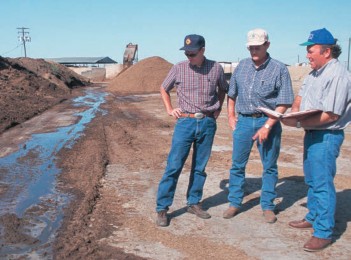
If you found this On-Site Guide useful, but would like a more detailed, scientific assessment, please contact your local USDA Natural Resources Conservation Service (NRCS) office and ask about the MontFARM program. Local NRCS office contact info can be found at www.mt.nrcs.usda.gov, or by looking in the government pages of your local phone directory.
Brief Summary of Water Quality Regulatory Programs in Montana
The Montana Department of Environmental Quality (DEQ) regulates pollution from livestock operations. The United States Environmental Protection Agency (EPA) provides oversight for some of DEQ’s regulatory activities.
The Montana Water Quality Act
Discharges of pollutants to state waters are governed by The Montana Water Quality Act (75-5-101 et seq. MCA). Section 605 of the Act states that it is unlawful to cause pollution of any state waters or to place wastes in a location where they will cause pollution (75-5-605 (1) (a) MCA). It is also unlawful to discharge sewage, industrial waste, or other wastes into any state waters without a current permit from the Department of Environmental Quality (DEQ) (75-5-605 (2) (c) MCA).
State waters are defined as a body of water, irrigation system, or drainage system, either surface or underground (75- 5-103(25) MCA). Surface waters that flow periodically in ephemeral and intermittent channels are state waters. The definition excludes non-discharging, waste containment or treatment ponds and irrigation or land application systems having no return flow to state waters. The term “state waters” serves only to identify what is protected under the law. The term conveys no right of ownership.
Livestock owners can assess their operations by asking, “Do or will wastes from my operation, discharge into any state waters?” If the answer is “no”, there is no permit requirement. If the answer is “yes”, the owner may be in violation of the Montana Water Quality Act (unless he/she has a valid discharge permit from DEQ). Compliance may only require minor changes to completely isolate wastes from state waters and avoid the need for a permit. Permits are only required for animal feeding operations that actually discharge. Animal feeding operations located near surface water or over shallow ground water are the most likely to require permits.
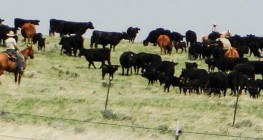
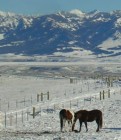
The Permit Program
DEQ administers the Montana Pollutant Discharge Elimination System (MPDES) permit program. The MPDES program includes a discharge permit for concentrated animal feeding operations (CAFOs). In many cases, especially with the smaller operations, voluntary compliance with the state rules can eliminate the need for a permit. The following definitions apply to discharge permitting for CAFOs. These definitions are found in 75-5-801 MCA of the Montana Water Quality Act.
(1) “Animal feeding operation” means a lot or facility where the following conditions are met:
(a) animals have been, are, or will be stabled or confined and fed or maintained for a total of 45 days or more in any 12-month period; and
(b) crops, vegetation, forage growth, or postharvest residues are not sustained in the normal growing season over any portion of the lot or facility.
(2) “Concentrated animal feeding operation” (CAFO) means an animal feeding operation that is defined as a large concentrated animal feeding operation or as a medium concentrated animal feeding operation or that is designated as a concentrated animal feeding operation in accordance with 40 CFR, part 122. Two or more animal feeding operations under common ownership are considered to be a single animal feeding operation for the purposes of determining the number of animals at an operation if they adjoin each other or if they use a common area or system for the disposal of wastes.
(3) “Large concentrated animal feeding operation” means an animal feeding operation that stables or confines at a minimum:
(a) 700 mature dairy cows, whether milked or dry;
(b) 1,000 veal calves;
(c) 1,000 cattle other than mature dairy cows or veal calves;
(d) 2,500 swine each weighing 55 pounds or more;
(e) 10,000 swine each weighing less than 55 pounds;
(f) 500 horses;
(g) 10,000 sheep or lambs;
(h) 55,000 turkeys;
(i) 30,000 laying hens or broilers if the animal feeding operation uses a liquid manure-handling system;
(j) 125,000 chickens, other than laying hens, if the animal feeding operation uses other than a liquid manure-handling system;
(k) 82,000 laying hens if the animal feeding operation uses other than a liquid manure-handling system;
(l) 30,000 ducks if the animal feeding operation uses other than a liquid manure-handling system; Or
(m) 5,000 ducks if the animal feeding operation uses a liquid manure-handling system.
(4) “Medium concentrated animal feeding operation” means an animal feeding operation with the type and number of animals that fall within any of the ranges listed in subsection (4) (a) and that has been defined or designated as a concentrated animal feeding operation. An animal feeding operation is defined as a medium concentrated animal feeding operation if:
(a) the type and number of animals that it stables or confines falls within any of the following ranges:
(i) 200-699 mature dairy cows, whether milked or dry;
(ii) 300-999 veal calves;
(iii) 300-999 cattle other than mature dairy cows or veal calves;
(iv) 750-2,499 swine each weighing 55 pounds or more;
(v) 3,000-9,999 swine each weighing less than 55 pounds;
(vi) 150-499 horses;
(vii) 3,000-9,999 sheep or lambs;
(viii) 16,500-54,999 turkeys;
(ix) 9,000-29,999 laying hens or broilers if the animal feeding operation uses a liquid manure-handling system;
(x) 37,500-124,999 chickens, other than laying hens, if the animal feeding operation uses other than a liquid manure-handling system;
(xi) 25,000-81,999 laying hens if the animal feeding operation uses other than a liquid manure-handling system;
(xii) 10,000-29,999 ducks if the animal feeding operation uses other than a liquid manure-handling system; Or
(xiii) 1,500-4,999 ducks if the animal feeding operation uses a liquid manure-handling system; And
(b) either of the following conditions is met:
(i) pollutants are discharged into waters of the state through a constructed ditch, flushing system, or other similar constructed device; Or
(ii) pollutants are discharged directly into waters of the state that originate outside of and pass over, across, or through the facility or otherwise come into direct contact with the animals confined in the operation.
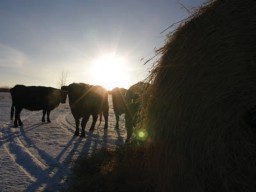
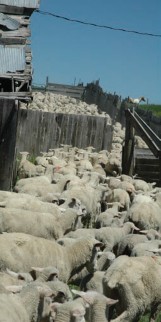

Please note the following in regards to the above description:
- Grass stubble along a fence line or a few incidental weed patches in the confinement area do not count as “sustained” vegetation, and will typically not prevent a livestock operation from being classified as an AFO.
- A smaller AFO (e.g. a cattle operation with less than 300 head) can be designated a CAFO if it is found to be a significant contributor of pollution. The designation procedure is typically regarded as being reserved for extreme situations.
- CAFOs are classified as point sources under both the U.S. and the Montana water quality acts. They must have a permit in order to legally discharge any amount of waste.
Discharge permits for CAFOs place limits on discharges to surface and ground water. Permit conditions typically require regular monitoring and reporting, as well as the use of certain best management practices in order to reduce the likelihood and severity of potential discharges. Permits also require payment of a $600.00 application fee (you must reapply every five years). There is also an additional, $600.00 annual fee that must be paid in order to maintain permit coverage. An annual discount is available for compliance and on-time annual reporting.
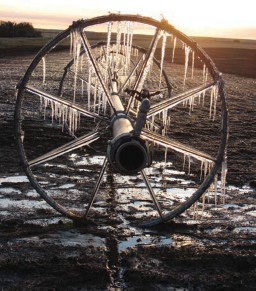
Please contact the Montana Department of Environmental Quality’s Water Protection Bureau in order to obtain the most current, detailed, discharge permit information. Water Protection Bureau staff may be reached by phone at
(406) 444-3080, or on the web at: http://deq.mt.gov/pcd/wpb/default.mcpx.
Developed by: Montana Association of Conservation Districts
Author: Greg Evertz
Funded by: Montana Department of Environmental Quality 319 Program
Editing, Design, and Publishing by: Thomas Bass and David Ashcraft, Montana State University Extension
Contributing partners: USDA-NRCS and MT DEQ
Photos courtesy of: USDA-NRCS or taken by Greg Evertz.
This document may be viewed and printed from www.macdnet.org

